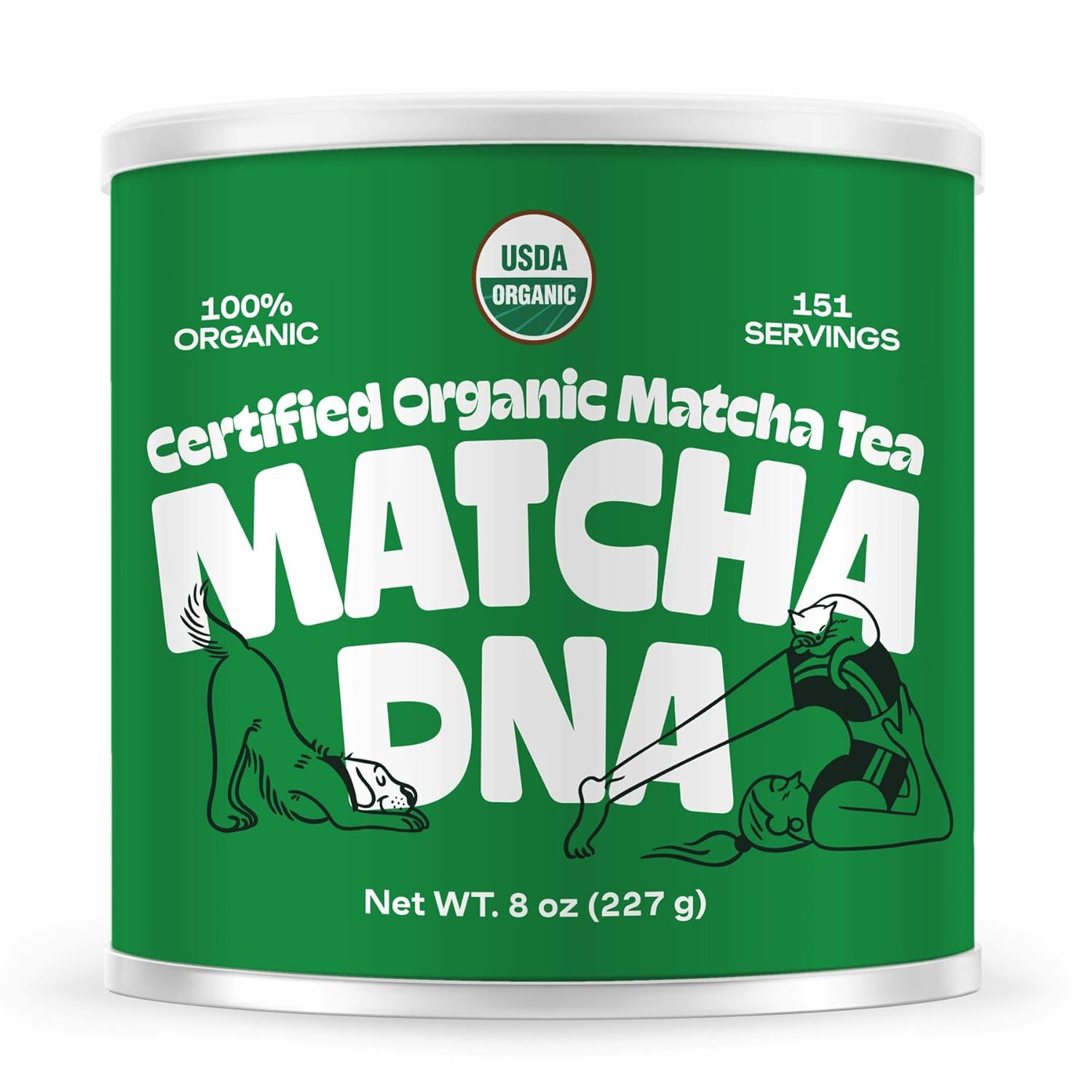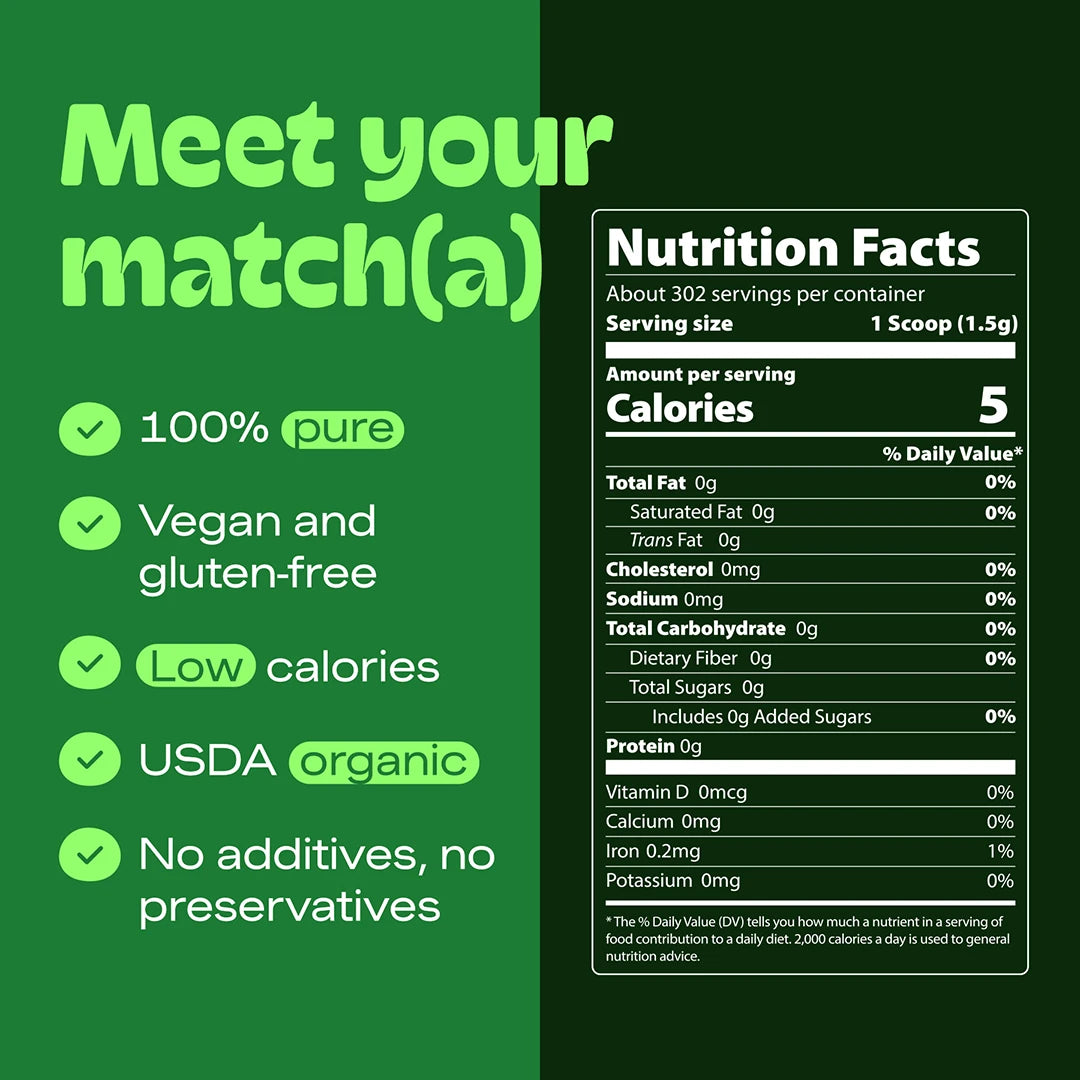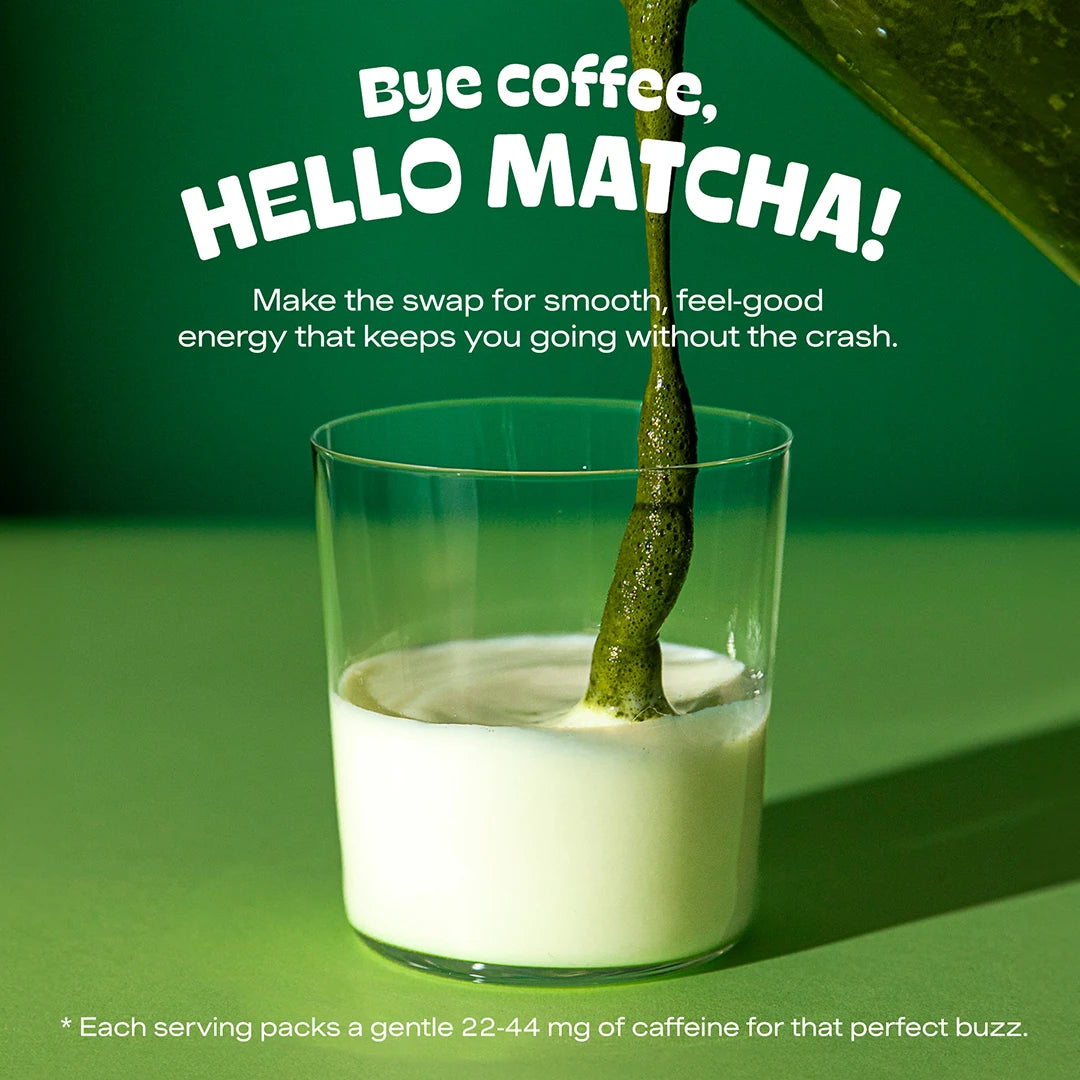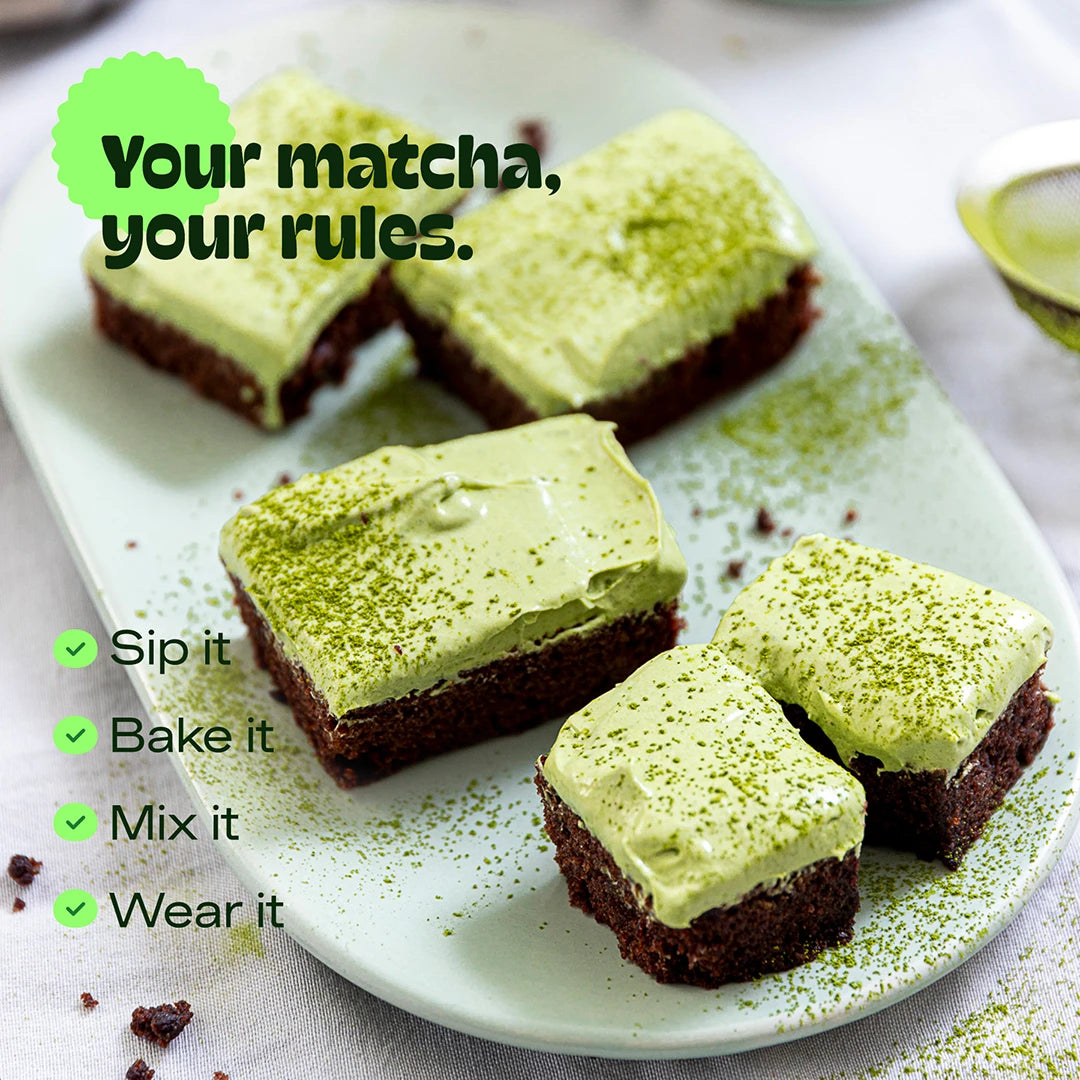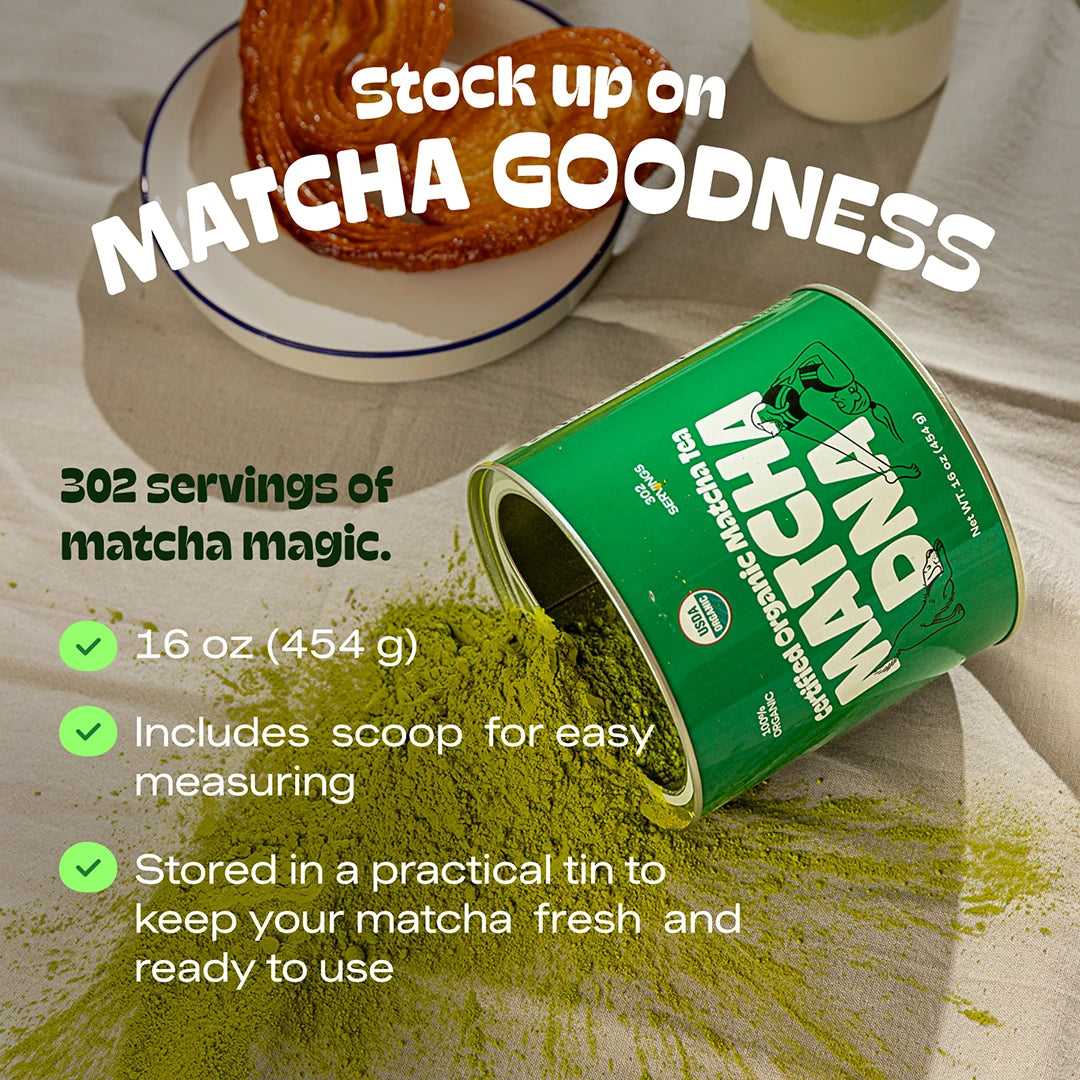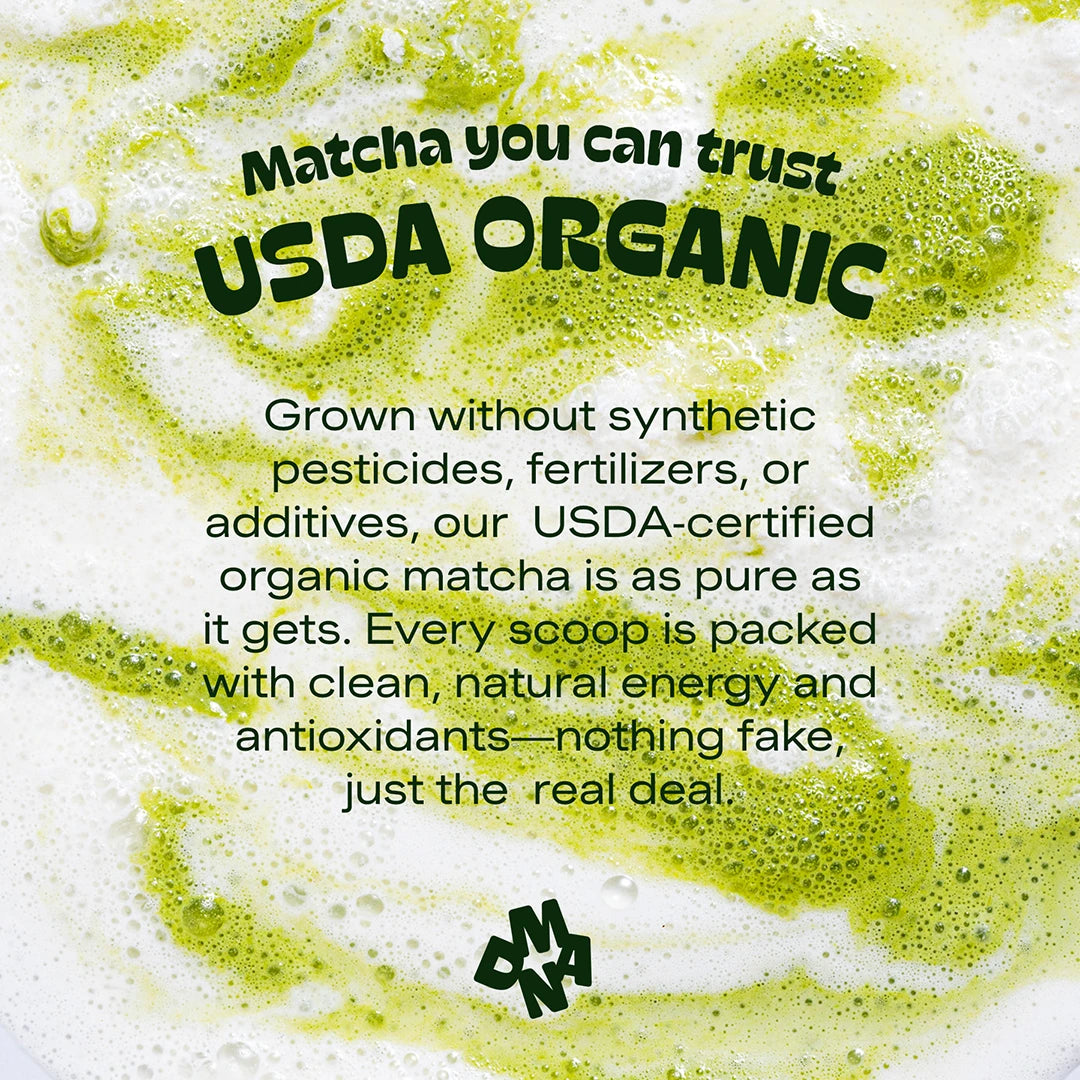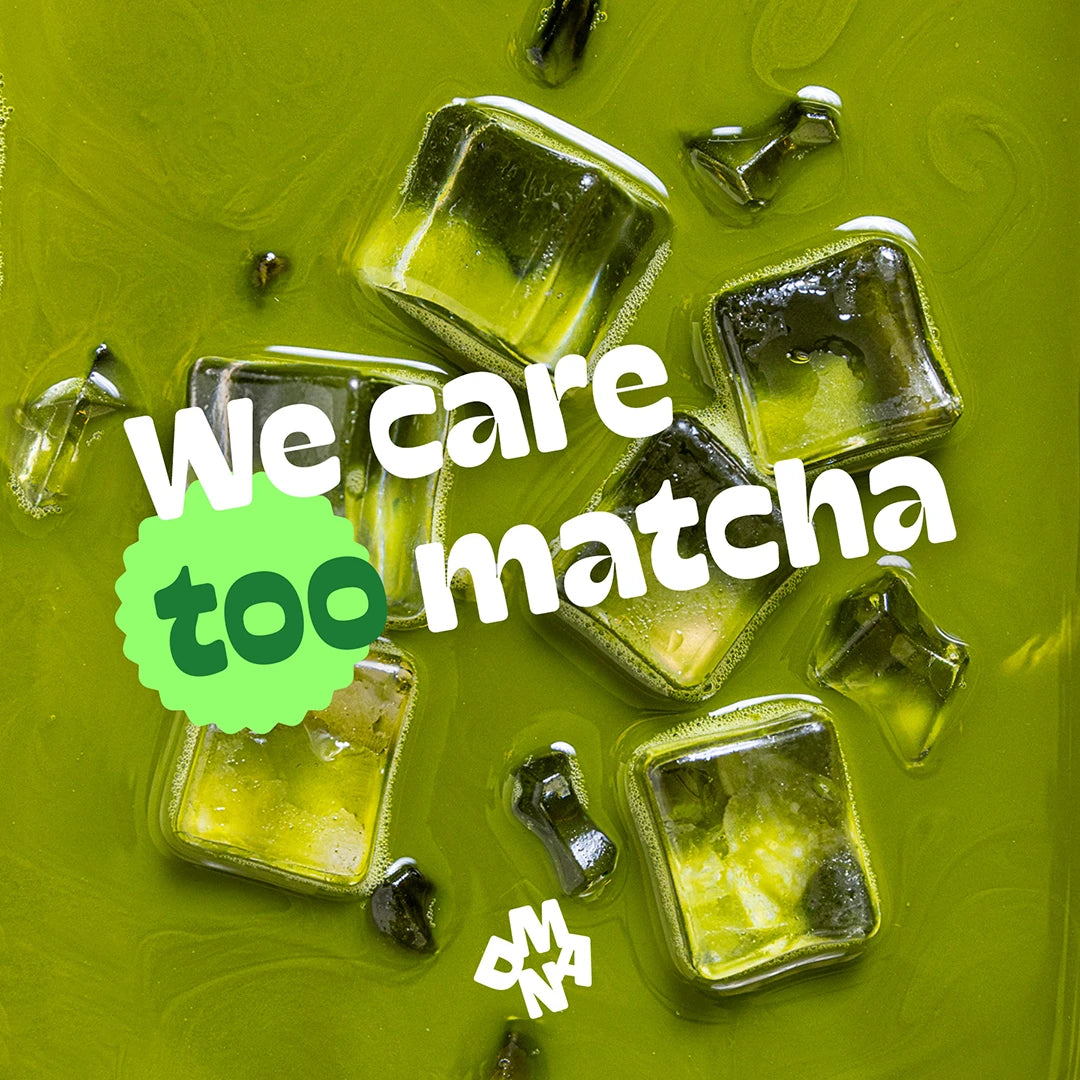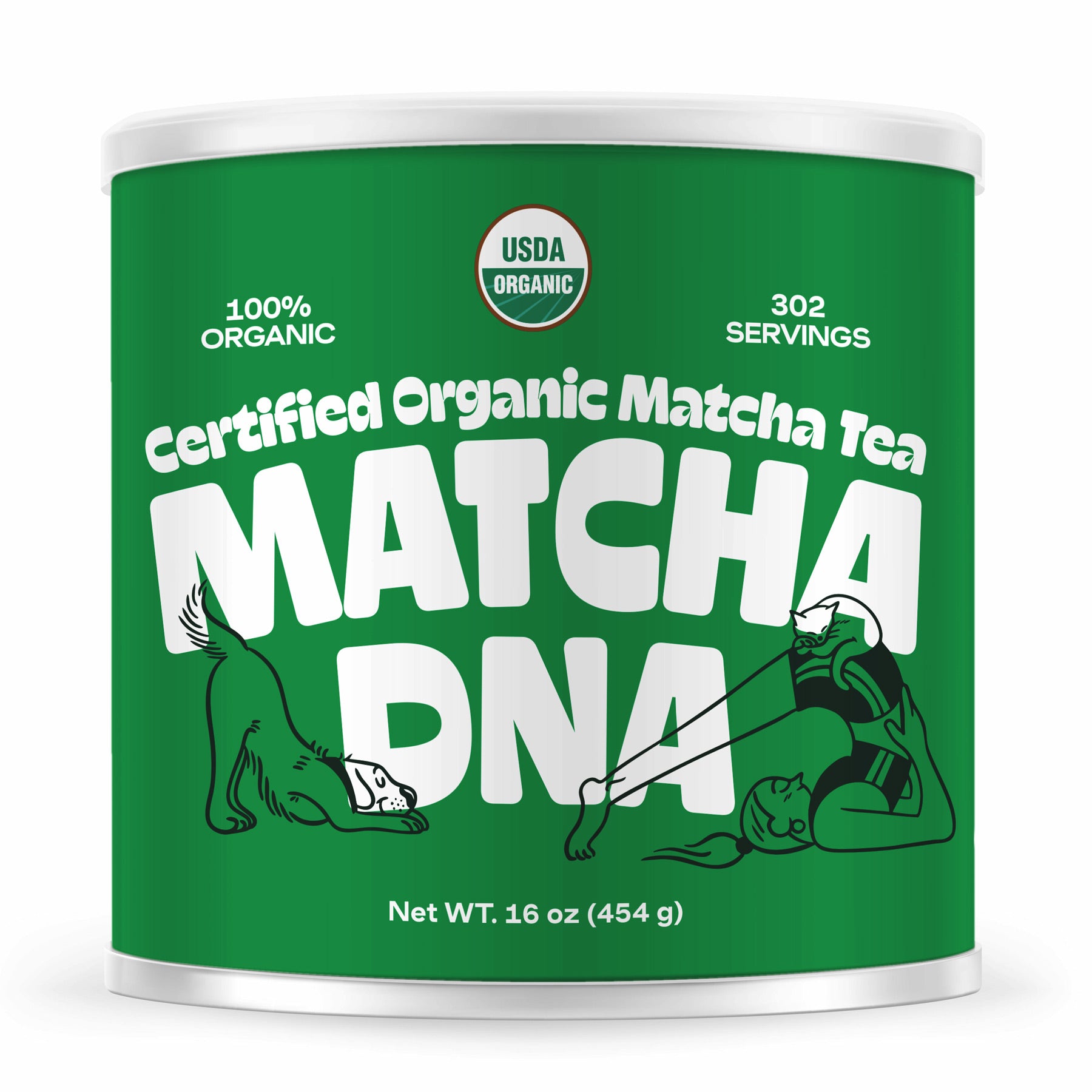Is matcha green tea? Is green tea matcha?
If you’ve ever found yourself scratching your head over these questions, you’re not the only one. Even though they’re closely related, these two beverages actually differ in quite a few ways, so let me break it down for you.
Green tea who?
Green tea is a lightly processed tea made from Camellia sinensis leaves. It’s traditionally brewed by steeping the leaves in hot water. With a history that takes it back thousands of years, it’s actually one of the most celebrated drinks in the world. Big words, huh?
Your matcha green queen
Matcha is a type of green tea, but it’s not your average kind. It’s finely ground, made from specially grown tea leaves. And, as you well know it, to drink it you don’t steep the leaves: you mix the powder (made from the entire leaf) with warm water.
Just like green tea, matcha’s history goes back centuries, and it has been a super important part of tea ceremonies. Nowadays, though, it’s much more than that, embraced by us matcha-addicts who use it in everything from lattes to beauty routines.
Harvesting and processing
These two teas are actually harvested and processed differently.
Green tea:
-
Standard harvesting: leaves are picked, quickly heated to stop oxidation, and then dried.
-
Minimal processing: this method preserves the natural flavors and maintains a light, delicate taste.
Matcha:
-
Unique shade-growing: tea plants are covered for weeks before harvest to boost chlorophyll levels, resulting in a vibrant green color.
-
Careful hand-picking: to select only the finest leaves.
-
Grinding: the leaves are ground into a fine powder, ensuring that every particle is packed with nutrients and flavor.
How to drink it
Another difference between matcha vs. green tea is how it is consumed.
To have a nice cup of green tea, you have to:
-
Heat water.
-
Pour it over the tea leaves.
-
Steep for 2-3 minutes.
For a matcha green tea, however, you mix, not steep:
-
Scoop the matcha tea powder into a bowl.
-
Add warm water.
-
Whisk until frothy.
The great thing about matcha powder? It’s really versatile, so you can make lattes, incorporate it into smoothies, cakes, desserts, and even into your beauty routine.
Health benefits
As I said, these two drinks are very much related, and they actually offer very similar benefits for your health.
-
Both teas are loaded with antioxidants that help fight free radicals.
-
They both provide a calming effect that promotes relaxation.
However, when you drink matcha, you’re consuming the entire leaf. That means that you absorb a higher concentration of nutrients, which results in a more potent boost, be it for focus, energy, or overall wellness. I don’t wanna say it, but matcha is kinda like the upgraded version of green tea.
Both are great, but matcha? It levels up your life
While both green tea and matcha are fantastic beverages in their own, I can’t help myself to say that matcha truly takes it up a notch. You get to absorb extra nutrients, and it also gives you the versatility you need. Not to brag, buuut it’s like the perfect match.
So, next time you’re wondering, matcha vs. green tea, remember: matcha is a type of green tea, but it doesn’t necessarily go the other way around, and it gives you that extra edge.
That’s all, friends ⟡˖ ࣪
Ready to elevate your tea game?
Dive into the world of matcha and check out our blog for more matcha tea benefits, inventive recipes, and beauty hacks.

